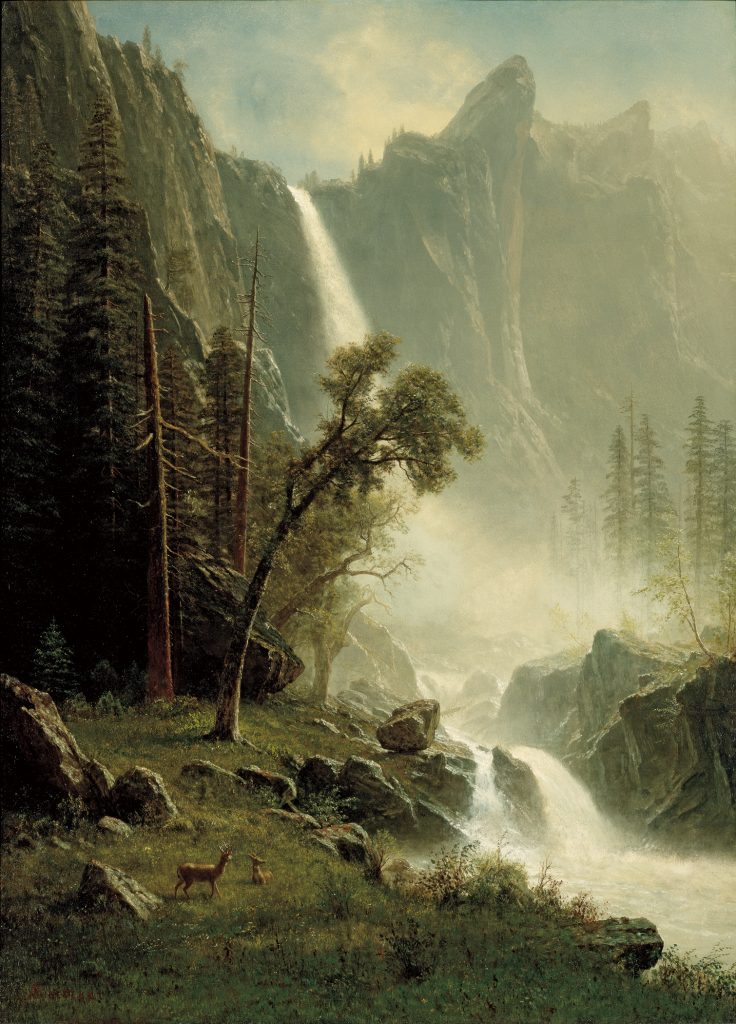1. Assign the class to examine Bridal Veil Falls, Yosemite. Have students compare the image to a current photograph of the site. http://www.yosemite.com/what-to-do/bridalveil-fall/
Ask students to consider how accurately Bierstadt portrayed what he saw.
2. Hold a brief class discussion focused on the following question: Why might some 19th-century New Yorkers, upon first seeing this painting, think it was just a figment of the artist’s imagination?
3. Assign each student to read the description of western photographers “People and Events: Photographing the American Wilderness.”
4. Ask each student to respond YES or NO on a small sheet of paper to the following question: Do you think a photograph tells the truth?
Collect the responses and tabulate the results of the poll on the board. While looking at the class results, hold a brief whole-class discussion focused on the following question: Why did you vote the way you did? Some discussion should focus on objectivity versus subjectivity. Photographs, like other art forms, are subjective, although they might appear to be purely objective.
5. Continue the class discussion by asking students to consider the poll results when responding to the following question: Were photographs necessary to convince easterners of the grandeur (and the reality) of the American West? Why or why not?
6. Divide the class into pairs of students. Provide each pair of students with a copy of the Image Analysis Chart. Assign each pair of students to examine five additional images, two Bierstadt paintings of California:
and three Adams photographs of the West:
Ask each pair of students to record their observations on the Image Analysis Chart.
8. Hold a class discussion focused on the following question: Which images seem more accurate in depicting the western landscape, the Bierstadt painting or the Adams photographs? Why?
9. Assign each student to write a one-page essay assessing the validity of the following statement: Photographs should be considered fine art and treated just like paintings.
Have students draw on impressions of the Bierstadt paintings and Adams photographs to support their arguments. Students should be referred to the excerpt from Andy Grundberg’s Crisis of the Real, Writings on Photography since 1974 titled “Art or Document?”
Written by Zoe Voigt, Humanities Teacher
